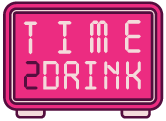What's Wine? What is Wine as an Alcoholic Beverage?
Wine is an alcoholic beverage that has existed since ancient times, dating back to the pre-Christian era.
True wine must be made from only one ingredient: 100% real grapes. Only then can it be correctly and confidently called "wine."
Nowadays, many producers add other fruits or herbs to grape juice, resulting in what is known as "fruit wine," which is not considered true wine. For example:
- If strawberries are added, it becomes strawberry wine.
- If mulberries are added, it becomes mulberry wine.
The main reasons for adding ingredients other than grapes are to reduce costs—since grapes can be expensive—and to benefit from lower tax rates when declared as "fruit-based alcoholic beverages." These products are often designed to appeal more to the Thai palate, offering a sweeter, more fragrant, and easy-to-drink flavor profile.
Types of Wine
- Still Wine
- Sparkling Wine
- Dessert Wine & Fortified Wine
Still Wine
Still wines can be categorized into four main types: Red, White, Rosé, and Orange (not made from oranges).
Red Wine is made from dark-skinned grapes. The grape skins are soaked with the juice to achieve the desired color. Then, the mixture is fermented with yeast to produce alcoholic grape juice, which becomes wine. The wine is aged in containers such as oak barrels, stainless steel tanks, or concrete vats for a duration that can range from several days to many years.
Finally, the wine is bottled for sale. However, some wines are required to undergo additional aging in the bottle before being sold to consumers. This process is called bottle ageing.
White Wine is made from white or even dark grapes, but without any skin contact. Only pure grape juice is used, and the process is similar to red wine: fermentation with yeast, aging, and bottling. The difference is that white wine is fermented at lower temperatures to slow down yeast activity and preserve delicate aromas and freshness.
Rosé Wine is made from dark grapes, like red wine, but the grape skins are only soaked briefly to extract a light pink color (short maceration). It is then fermented at white wine temperatures and aged before bottling.
In fact, there are several methods for producing rosé wine, such as saignée and direct pressing, which will be explained in a future article.
Orange Wine is made exclusively from white grapes. The skins are soaked with the juice to produce a light orange hue—hence the name "orange wine." It is not made from oranges. After fermentation with yeast, it is aged and bottled for sale.
Sparkling Wine
Sparkling wine production is more complex. Many types require a second fermentation to produce bubbles.
However, there are sparkling wines such as Asti and Ancestral that generate bubbles through only one fermentation.
The simplest method involves injecting carbon dioxide (CO₂), similar to how soft drinks are made. This technique is used for lower-priced sparkling wines.
Some of the most well-known and premium sparkling wines come from the following regions:
- Champagne (France)
- Crémant (various French regions)
- Franciacorta (Lombardy, Northern Italy)
- Cava (various Spanish regions, especially Catalonia)
- Cap Classique (Cape Town, South Africa)
Dessert Wine
Dessert wines are served with desserts and are extremely sweet, containing over 100 grams of sugar per liter. They are made from very sweet grapes like Moscato or through specific techniques such as late harvest, botrytis (noble rot), or ice wine. These methods increase the grape's sugar content before fermentation with yeast.
Fortified Wine
Fortified wine is wine with added alcohol. There are two main ways to do this:
- During fermentation — like with Port Wine from Portugal, the result is a sweet and high-alcohol wine. It pairs well with desserts, chocolate, or cake.
- After fermentation is complete — like with Fino Sherry from Spain, the result is a high-alcohol white wine that is not sweet. It pairs well with tapas or fried seafood.
Understanding the different types of wine and how they are made helps you choose the wine that best matches your taste preferences.
Written & Compiled by: Boy Smiling Wine
Which Type of Wine Should You Try First?
Select the category that interests you and click to explore:
Red Wine
Bold flavor, deep aroma, and strong tannins. Perfect with red meats or when you’re in the mood for something intense.
White Wine
Light, refreshing, and easy to drink. Great with seafood, salads, or appetizers.
Rosé Wine
Fruity and fragrant. A relaxed choice for outdoor sipping or light gatherings.
Sparkling Wine
Bubbly and festive. Ideal for special occasions or celebratory moments.
Browse All Wines
Explore our full range of red, white, rosé, and sparkling wines — all in one place.










